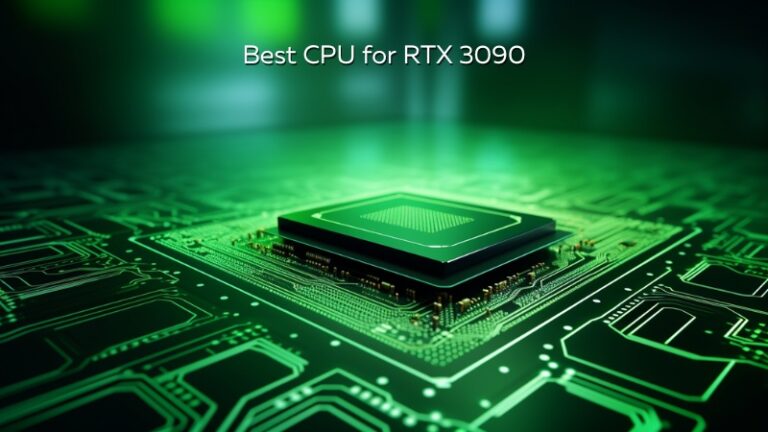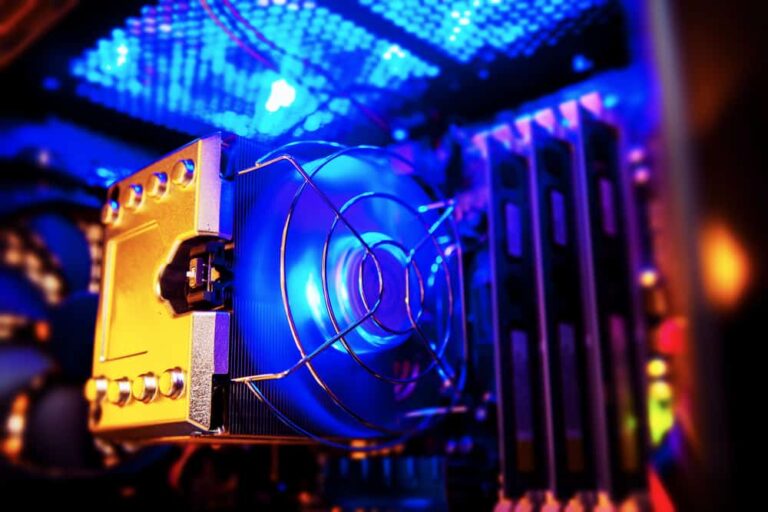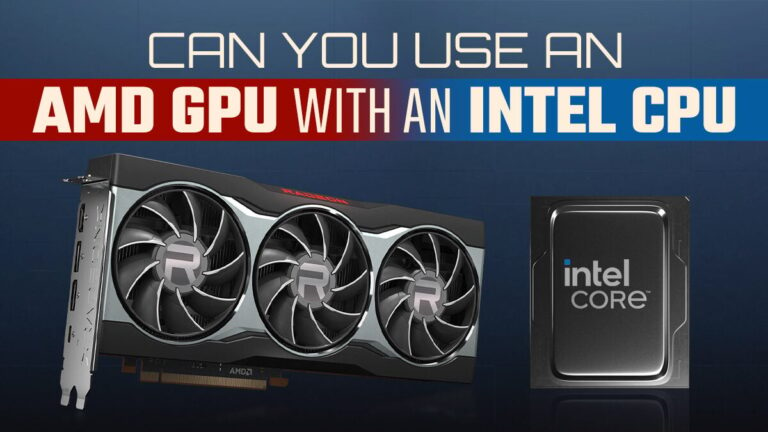CPU Hierarchy 2023
The CPU hierarchy for 2023 ranks current AMD and Intel processors based on performance.
Understanding The Cpu Hierarchy
The CPU Hierarchy in 2023 ranks and compares the performance of different processors, including the latest AMD Ryzen and Intel cores.
This insightful guide helps you understand the best CPUs for gaming, laptops, and desktops, enabling you to make informed decisions based on performance benchmarks.
In today’s technology-driven world, computers have become an essential part of our daily lives.
From browsing the internet to running complex software, a computer’s performance largely depends on its central processing unit (CPU). But what exactly is CPU hierarchy, and why is it important in 2023?
Let’s delve into the details.
Importance Of CPU in Computer Systems:
- The CPU, often referred to as the brain of the computer, performs all the necessary calculations and executes instructions.
- It determines the overall speed and performance of the computer, impacting tasks such as gaming, video editing, and multitasking.
- A powerful CPU boosts system responsiveness and reduces lag, allowing for smoother and faster computing experiences.
- CPUs with multiple cores enable parallel processing, enhancing the efficiency and speed of multitasking operations.
What Is Cpu Hierarchy?
- CPU hierarchy refers to the classification and ranking of CPUs based on their performance levels.
- It allows users to compare different CPUs and select the one that suits their needs and budget.
- The hierarchy takes into account factors like clock speed, number of cores, cache size, and microarchitecture.
- CPUs are categorized into tiers, ranging from entry-level to high-end, based on their performance benchmarks.
Why Is CPU Hierarchy Important In 2023?
- As technology advances, the demand for more powerful CPUs continues to grow.
- By understanding the CPU hierarchy, users can make informed decisions when purchasing or upgrading their computer systems.
- It helps users identify the best CPUs for specific tasks and ensures they get the optimal performance for their requirements.
- With the rapid development of software and applications, having a CPU that can handle demanding tasks has become crucial.
- CPU hierarchy also assists in determining compatibility with other computer components such as motherboards and graphics cards.
Understanding the CPU hierarchy is essential when it comes to optimizing computer performance.
By knowing the hierarchy, users can make informed decisions when selecting and upgrading their CPUs, ensuring they get the best performance for their computing needs in 2023 and beyond.
Top-Tier Cpus For 2023
Discover the top-tier CPUs for 2023 with the latest CPU hierarchy.
Find the best processors for your gaming or professional needs, ranked based on performance and value.
Stay ahead of the game with cutting-edge technology.
Overview Of The Highest Performing Cpus
- The top-tier CPUs for 2023 provide exceptional performance and power for demanding tasks such as gaming, content creation, and professional work.
- These CPUs offer advanced features and specifications that enable faster processing speeds and improved efficiency.
- With cutting-edge technology, these CPUs deliver superior multitasking capabilities, allowing users to run multiple applications simultaneously without any lag or performance issues.
- Designed for enthusiasts and demanding users, these CPUs boast high core counts, clock speeds, and cache sizes, ensuring seamless performance for resource-intensive tasks.
- Whether you’re a professional video editor, a hardcore gamer, or a creative designer, these high-performance CPUs will meet your computing needs and provide an exceptional user experience.
Key Features And Specifications Of Top-Tier Cpus
- High clock speeds: With clock speeds ranging from 3.40 GHz to 4.90 GHz, these CPUs offer blistering fast performance, ensuring quick task execution and smooth multitasking.
- Multiple cores: Featuring 16 to 32 cores, these CPUs deliver exceptional parallel processing power, enabling faster rendering, encoding, and multitasking.
- Large cache size: With cache sizes of 64 MB, these CPUs provide quick access to frequently used data, reducing the latency and improving overall system performance.
- AM4 socket: These CPUs utilize the AM4 socket, which offers compatibility with a wide range of motherboards, allowing users to customize their system according to their specific needs.
- Efficient power consumption: Despite their high performance, these CPUs are designed to be energy efficient, ensuring reduced power consumption and lower heat generation.
Comparison Of Top-Tier Cpus From Different Manufacturers
- AMD Ryzen: The top-tier Ryzen CPUs deliver exceptional performance and value for money. With high core counts and clock speeds, these CPUs excel in multitasking and gaming scenarios. They also offer overclocking capabilities for enthusiasts who want to squeeze out every bit of performance.
- Intel Core: The top-tier Intel Core CPUs are renowned for their single-threaded performance and compatibility with a wide range of applications. With high clock speeds and Intel’s Hyper-Threading technology, these CPUs deliver outstanding performance in gaming and professional workloads.
- Xeon: Aimed at professional users and workstations, the top-tier Xeon CPUs offer unmatched reliability, scalability, and advanced features. With support for multiple threads and ECC memory, these CPUs excel in demanding tasks such as CAD, simulations, and data analysis.
The top-tier CPUs for 2023 provide exceptional performance and power for demanding tasks. With high clock speeds, multiple cores, and large cache sizes, these CPUs deliver outstanding performance and ensure smooth multitasking. Whether you choose AMD Ryzen, Intel Core, or Xeon, you can expect top-notch performance and reliability for your computing needs.
Mid-Tier CPUs For 2023
Discover the top mid-tier CPUs for 2023 with the latest CPU hierarchy rankings. Compare AMD Ryzen and Intel Core processors for optimal performance in gaming and desktop applications.
Overview Of Mid-Range Cpus
Mid-tier CPUs for 2023 are processors that offer a balance between performance and affordability.
These CPUs are suitable for individuals who need a reliable processor for everyday tasks, gaming, and creative work.
Mid-range CPUs are known for their decent clock speeds, multiple cores, and reasonable prices.
Whether you’re a casual gamer or a content creator, these processors can meet your computing needs without breaking the bank.
Performance And Value Proposition Of Mid-Tier Cpus
- Affordable performance: Mid-tier CPUs provide a notable level of performance at a budget-friendly price point. They offer a good balance between cost and power, making them suitable for users who require reliable performance without spending a fortune.
- Multitasking capabilities: With multiple cores and threads, mid-range CPUs excel in multitasking scenarios. They can handle demanding tasks such as video editing, streaming, and running multiple applications simultaneously, ensuring a smooth user experience.
- Gaming prowess: Mid-tier CPUs are capable of providing a satisfactory gaming experience for most gamers. They offer decent clock speeds and sufficient core counts, enabling smooth gameplay and consistent frame rates in popular games.
- Efficiency and power consumption: These processors are designed to be power-efficient, helping to reduce energy consumption and keeping electricity bills in check. They strike a balance between performance and energy efficiency, making them an excellent choice for environmentally conscious users.
Key Factors To Consider When Choosing A Mid-Tier Cpu
- Performance requirements: Consider your specific needs and what tasks you’ll be performing on your computer. Determine whether you require more CPU power for tasks like video editing or if a mid-range processor will suffice for your everyday computing needs.
- Budget: Set a realistic budget for your CPU purchase. Mid-range CPUs offer a good blend of affordability and performance, making them an ideal choice for most users. Make sure to find a processor that fits within your budget, ensuring you get the best value for your money.
- Compatibility: Check if the mid-tier CPU you’re considering is compatible with your existing motherboard. Consider the socket type and make sure it supports the processor you intend to purchase.
- Future-proofing: It’s wise to consider future upgrades and compatibility. Look for CPUs that offer compatibility with future technologies and have a good performance trajectory, allowing you to upgrade other components without replacing the entire platform in the future.
- Reviews and benchmarks: Read reviews and check benchmark tests to get an idea of the CPU’s performance in real-world scenarios. Look for reputable sources and compare different models before making a final decision.
By considering these factors, you can select a mid-tier CPU that meets your performance needs and budget, ensuring a smooth computing experience for years to come.
Budget-Friendly Cpus For 2023
Discover the best budget-friendly CPUs for 2023 with our CPU Hierarchy.
Compare performance rankings of AMD Ryzen and Intel processors to find the perfect CPU for your needs.
Affordable Options For Budget-Conscious Users:
- Intel Core i3-10100F: This CPU offers a great balance between price and performance, making it an ideal choice for budget-conscious users. With 4 cores and 8 threads, it can handle everyday tasks and light gaming with ease.
- AMD Ryzen 3 3300X: The Ryzen 3 3300X is another affordable option that provides excellent value for money. It features 4 cores and 8 threads, as well as impressive single-threaded performance, making it perfect for gaming on a budget.
- Intel Pentium Gold G6400: If you’re looking for a budget-friendly CPU for basic computing tasks, the Pentium Gold G6400 is a solid option. With 2 cores and 4 threads, it offers decent performance for its price point.
Performance Evaluation Of Budget-Friendly Cpus:
- Intel Core i3-10100F: This CPU delivers solid performance for its price range, offering a base clock speed of 3.6 GHz and a maximum turbo frequency of 4.3 GHz. It handles multitasking and light gaming tasks smoothly.
- AMD Ryzen 3 3300X: With a base clock speed of 3.8 GHz and a maximum boost clock of 4.3 GHz, the Ryzen 3 3300X performs admirably in both single-threaded and multi-threaded workloads. It’s particularly well-suited for gaming.
- Intel Pentium Gold G6400: While not as powerful as the other options, the Pentium Gold G6400 is still capable of handling basic computing tasks and light gaming. It has a base clock speed of 4 GHz and lacks turbo boost functionality.
Recommendations For The Best Budget-Friendly Cpus:
- Intel Core i3-10100F: With its balanced performance and affordability, the Core i3-10100F is a strong choice for budget-conscious users. It provides enough power for everyday tasks and entry-level gaming.
- AMD Ryzen 3 3300X: Gamers on a tight budget will appreciate the performance offered by the Ryzen 3 3300X. Its higher clock speeds and strong multi-threaded performance make it a great choice for gaming enthusiasts.
- Intel Pentium Gold G6400: If you’re primarily focused on basic computing tasks and don’t require the highest performance, the Pentium Gold G6400 offers good value for its price. It’s an economical option for budget-conscious users.
Factors Influencing CPU Hierarchy
Factors influencing CPU hierarchy in 2023 consist of performance benchmarks, architecture advancements, core count, clock speed, and cache size.
These factors play a crucial role in determining the ranking and overall performance of processors in the CPU hierarchy.
:
The CPU hierarchy is determined by several factors that affect its overall performance. In this section, we will explore the impact of architecture, clock speed and core count, and cache size on CPU hierarchy.
Impact Of Architecture On CPU Performance:
The architecture of a CPU plays a crucial role in determining its performance capabilities. Here are some key points to consider regarding the impact of architecture on CPU hierarchy:
- Instruction Efficiency: Different CPU architectures have varying levels of instruction efficiency, which can directly impact their performance. Architectures that can execute instructions more efficiently tend to rank higher in the CPU hierarchy.
- Microarchitecture Innovations: Advancements in microarchitecture can greatly enhance CPU performance. The inclusion of features like branch prediction, out-of-order execution, and simultaneous multithreading can significantly boost a CPU’s ranking in the hierarchy.
- Power Efficiency: Architecture also influences a CPU’s power efficiency. Processors with energy-efficient designs tend to consume less power while delivering impressive performance, earning them a higher spot in the CPU hierarchy.
- Manufacturing Process: The manufacturing process used for producing the CPU also affects its performance. Advanced manufacturing technologies allow for the creation of smaller transistors, leading to increased performance and improved power efficiency.
Role Of Clock Speed And Core Count In CPU Hierarchy:
Clock speed and core count are two vital specifications that directly impact where a CPU stands in the hierarchy. Here’s why:
- Clock Speed: This refers to the speed at which a CPU’s cores execute instructions. CPUs with higher clock speeds can perform calculations and tasks at a faster rate, earning them a higher position in the hierarchy. However, it’s essential to consider that clock speed is not the sole determinant of a CPU’s overall performance, as other factors like architecture and cache size also come into play.
- Core Count: The number of cores in a CPU plays a significant role in multitasking and parallel processing capabilities. CPUs with a higher core count can handle more simultaneous tasks, resulting in improved performance. A CPU with a higher core count is generally regarded as more powerful and secures a superior ranking in the CPU hierarchy.
How Cache Size Affects CPU Performance:
Cache size is another crucial factor that influences CPU performance and its position in the hierarchy. Consider the following points:
- Level 1, Level 2, and Level 3 Cache: CPUs have multiple levels of cache, ranging from Level 1 (L1) to Level 3 (L3). The L1 cache is the fastest but has the smallest capacity, while the L3 cache is larger but slightly slower. CPUs with larger cache sizes can store more frequently accessed data, reducing the need to retrieve information from slower RAM. As a result, CPUs with larger cache sizes often perform better and occupy higher positions in the CPU hierarchy.
- Smart Cache: Some CPUs utilize a smart cache system that dynamically allocates cache space based on the application’s needs. This adaptive approach ensures that frequently accessed data remains readily available, benefiting overall CPU performance.
Several factors influence CPU hierarchy, including architecture, clock speed, core count, and cache size.
Each of these components plays a vital role in determining a CPU’s performance capabilities and its position in the hierarchy.
As technology advances, it’s essential to consider these factors to make informed decisions regarding CPU selection.
Future Trends In CPU Hierarchy
The future trends in CPU hierarchy for 2023 showcase a range of powerful processors offering improved performance and efficiency.
With options like AMD Ryzen and Intel Core, users can expect higher clock speeds and greater core counts, making them ideal for gaming, productivity, and everyday computing needs.
Stay updated with the latest advancements in CPU technology to make the most informed decisions for your computing needs.
Predictions For Advancements In CPU Technology:
- Increased focus on energy efficiency: As technology advances, there will be a greater emphasis on developing CPUs that consume less power while still delivering high performance.
- Integration of AI capabilities: AI is becoming increasingly prevalent in various industries, and CPU technology is no exception. CPUs of the future are likely to incorporate AI capabilities to enhance performance and facilitate tasks such as machine learning and natural language processing.
- More cores and increased parallel processing: With the ever-increasing demand for multitasking and high-performance computing, CPUs will continue to offer more cores, allowing for efficient parallel processing and improved overall performance.
- Advances in nanotechnology: Nanotechnology is expected to play a significant role in the advancement of CPU technology. Miniaturization of components and the incorporation of nanomaterials could lead to faster, more efficient CPUs in the future.
Emerging Technologies That Could Impact Cpu Hierarchy:
- Quantum computing: Quantum computing has the potential to revolutionize CPU technology. By utilizing quantum principles such as superposition and entanglement, quantum CPUs could solve complex problems exponentially faster than traditional CPUs.
- Neuromorphic computing: Inspired by the human brain, neuromorphic computing aims to develop CPUs that can process information in a manner similar to neural networks. This technology has the potential to greatly improve AI capabilities and redefine the CPU hierarchy.
- Optical computing: Optical computing utilizes light instead of electrical current to perform computational tasks. CPUs that harness the power of photons could offer significant speed and energy efficiency advantages over traditional electronic CPUs.
Potential Changes To The Cpu Hierarchy Landscape In The Future:
- Shift towards specialized processors: As technology becomes more specialized, CPUs may need to adapt by incorporating dedicated processors for specific tasks. For example, we may see the emergence of CPUs with specialized processors for gaming, AI, or data analytics, leading to a more diverse CPU hierarchy.
- Increase in hybrid CPU architectures: Hybrid CPU architectures, combining traditional CPUs with accelerators such as GPUs or FPGA, could become more prevalent. This hybrid approach allows for better optimization of computational tasks and improved overall performance.
- Evolution of system-on-chip (SoC) designs: SoC designs integrate multiple components, including CPUs, onto a single chip. The future of CPU hierarchy may involve more advanced SoC designs that not only incorporate CPUs but also other crucial components such as GPUs, memory, and AI accelerators.
Overall, the CPU hierarchy landscape in 2023 and beyond is expected to witness advancements in energy efficiency, increased integration of AI capabilities, the emergence of new technologies like quantum and neuromorphic computing, and changes in architectural designs to accommodate the evolving needs of specialized tasks.
These developments will shape the future of CPU technology and impact the hierarchy of processors.

Credit: www.wepc.com
Frequently Asked Questions Of Cpu Hierarchy 2023
What Are The Cpu Trends For 2023?
In 2023, CPU trends include higher clock speeds, more cores/threads, and improved performance for gaming and productivity tasks.
What Is The Best CPU in 2023?
The best CPU in 2023 is the AMD Ryzen with a clock speed of 3. 40 GHz to 4. 80 GHz and a core count of 12/24 or 16/32.
Is Amd Or Intel Better In 2023?
In 2023, AMD has better processors compared to Intel.
What Is The Current Intel Processor In 2023?
The current Intel processor in 2023 is not specified.
Conclusion
CPU Hierarchy 2023 has provided us with valuable insights into the top processors available in the market.
As technology continues to evolve, it is crucial to stay up to date with the latest advancements in CPU technology.
This blog post has successfully ranked processors based on their performance, giving readers a comprehensive understanding of the best options for their specific needs.
AMD Ryzen has emerged as a strong competitor, offering high-performance processors that cater to both gaming and professional use.
Intel’s Core and Xeon processors have also been recognized for their exceptional capabilities.
The CPU benchmarks and performance hierarchy mentioned in this blog post serve as a useful guide for individuals looking to purchase a new processor.
By referencing this CPU hierarchy, users can now make informed decisions regarding their next CPU upgrade or new system build.
Remember, choosing the right CPU is crucial for optimal performance, whether it be for gaming, professional tasks, or general usage.
Stay informed and take advantage of the latest CPU technologies to enhance your computing experience.





